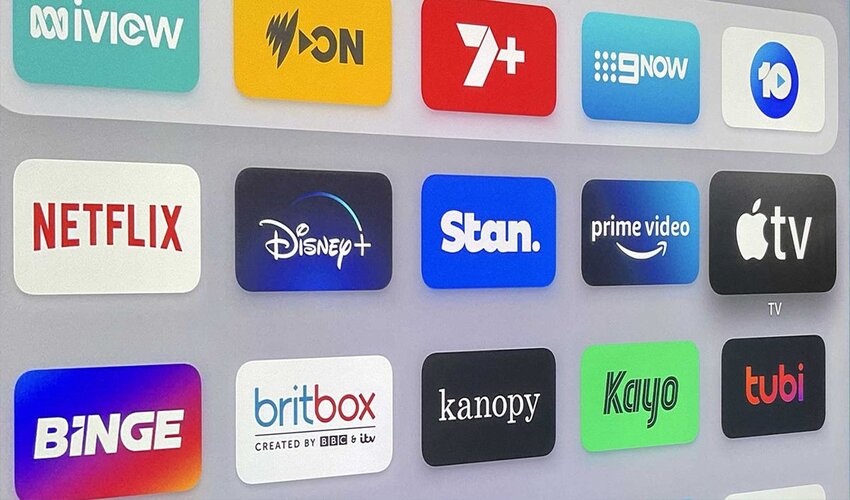
Introduction
Streaming services like Amazon Prime Video, Netflix, Hulu, and others have revolutionized the way we consume entertainment. However, it is frustrating to wait for videos to buffer or experience constant interruptions during our favorite shows or movies. All famous streaming services now have mobile apps that require a stable internet connection like the Cox phone plans to run smoothly. To ensure a seamless streaming experience at home, it is essential to optimize setup and internet connection.
In this article, we will discuss practical tips and tricks to help achieve undisrupted streaming on popular platforms. From optimizing your internet connection to adjusting settings on streaming devices, let’s dive into the steps that will enhance your streaming experience.
Optimizing Internet Connection
The basis for flawless streaming is a fast, reliable internet connection. Make sure you have a competent internet service provider (ISP) that provides enough bandwidth for streaming. The following tips can help to improve your internet connection:
Use a wired connection: Attach your streaming device to the router using an Ethernet cable for the best results. Compared to Wi-Fi, wired connections offer greater stability and faster speeds.
Upgrade Internet: Consider switching to a higher-speed internet plan if you frequently have quality or buffering issues, as streaming services have larger bandwidth requirements.
Limit your other internet usage: Avoid simultaneously executing bandwidth-intensive procedures like downloading huge files or streaming on numerous devices, as it can affect the quality of your streaming.
Adjusting Streaming Settings
The majority of streaming services provide options that let you adjust the video quality depending on your internet connection. You may achieve a balance between video quality and smooth streaming by optimizing these parameters. What you can do is:
Alter video resolution: Change the video resolution to correspond with the speed of your internet connection. If your internet connection is slow, pick a lower resolution, like 720p, or if it can handle it, up the resolution to 1080p or even 4K.
Adjust bitrates: Verify the bitrate of the streaming content. Some platforms have bitrate control choices. If your connection is weak, or it’s a busy period, lowering the bitrate can help your streaming perform better.
Enable adaptive streaming: Adaptive streaming technology is available on many streaming services, and it automatically modifies the video quality depending on your device.
Optimizing Streaming Devices
Your streaming experience is impacted by both streaming devices and the corresponding apps. Here are some techniques for improving them:
Update your devices regularly: To make sure they have the most recent software and firmware updates, regularly update your streaming devices, including smart TVs, streaming sticks, and gaming consoles. The updates often include bug fixes and performance improvements.
Clearing Cache: Cache and app data should be cleared because they may collect over time and hinder performance. The reliability and speed of streaming can be increased by frequently clearing cache and app data.
Close unneeded apps: On your streaming device, close any background programs that could be consuming resources and affecting the quality of your streaming.
Think about upgrading your streaming device’s hardware if you frequently experience buffering or latency.
Network Placement and Quality
To achieve flawless streaming, the physical positioning of your streaming devices and the quality of your internet network are essential factors. Think about the following elements:
Router Placement: Positioning your router strategically will ensure that your entire home has the best possible coverage. Place it far away from metal objects, walls, and other electronic devices to prevent signal interference.
Reduce wireless interference: Keep your streaming devices away from other items that generate wireless signals, such as cordless phones, microwaves, or baby monitors, to reduce interference.
Use Wi-Fi extenders or mesh networks: To improve coverage and guarantee a strong signal all around your home, take into account employing Wi-Fi extenders or mesh networks if you have dead spots or poor Wi-Fi signals in specific locations.
Conclusion
A combination of numerous factors is necessary to achieve seamless streaming on services like Amazon Prime Video, Netflix, Hulu, and others. These include stream setting adjustments, device and app optimization, and high-quality home networking. You can experience buffer-free, uninterrupted streaming with crisp video quality by following the tips provided in this article. It’s important to keep up with the evolving streaming technologies and your internet requirements by occasionally reviewing your setup and making appropriate adjustments. Sit back, relax, and enjoy a seamless streaming experience with your favorite shows and movies.
Author Bio:
Meet Thomas Coley, a tech aficionado unraveling the secrets to seamless online streaming in “Factors Contributing to Smooth Online Streaming.” With a wealth of experience, Thomas dives into the intricacies of internet performance, shedding light on crucial factors that impact your streaming experience. Focused on delivering insights, he explores the role of reliable connections, bandwidth optimization, and more. Thomas is passionate about demystifying tech complexities, making him your go-to guide for a buffer-free streaming journey. Discover his expertise to enhance your online experience, especially for users exploring Cox internet-only plans.

Aimee Garcia is a Marketing Consultant and Technical Writer at DailyTechTime. She has 5+ years of experience in Digital Marketing. She has worked with different IT companies.

